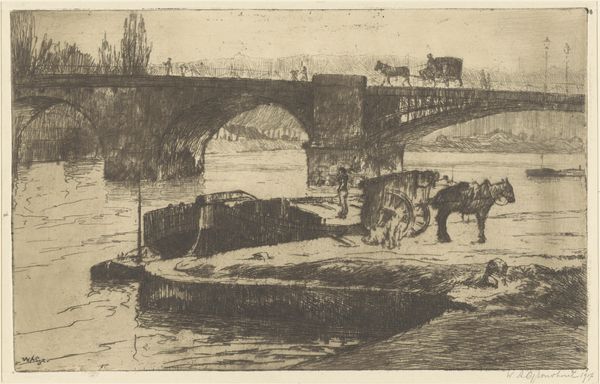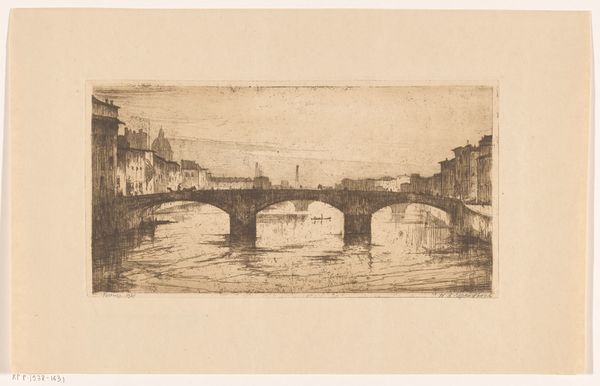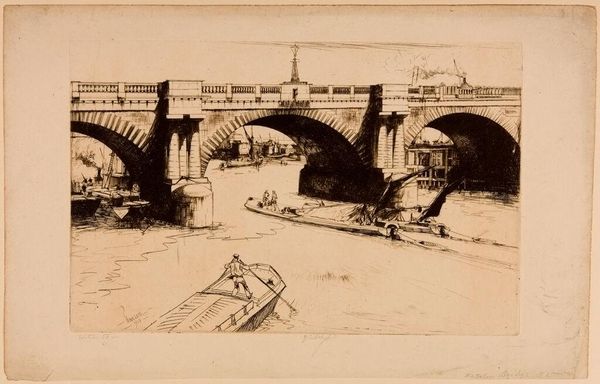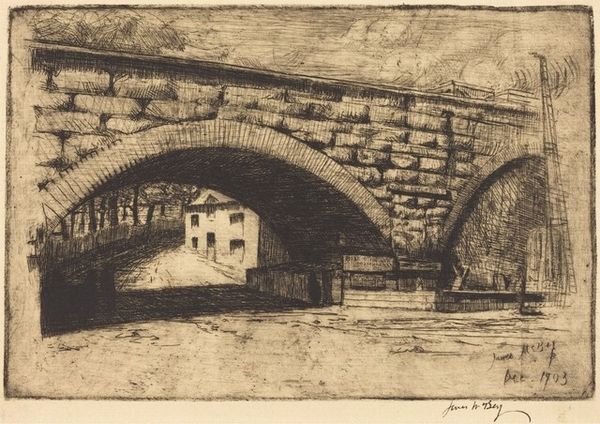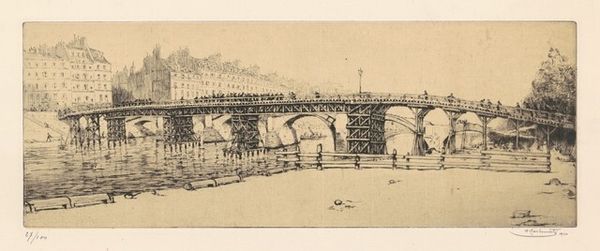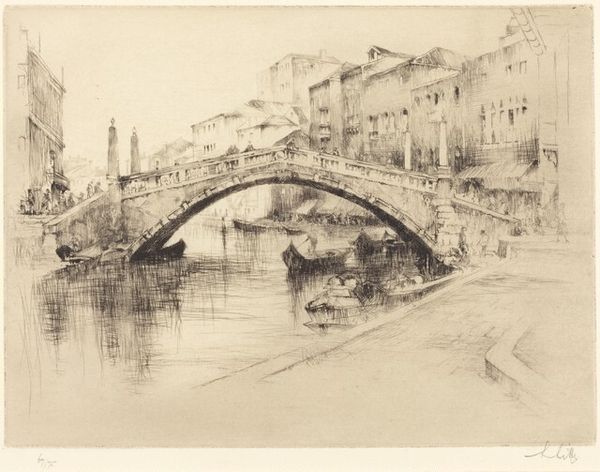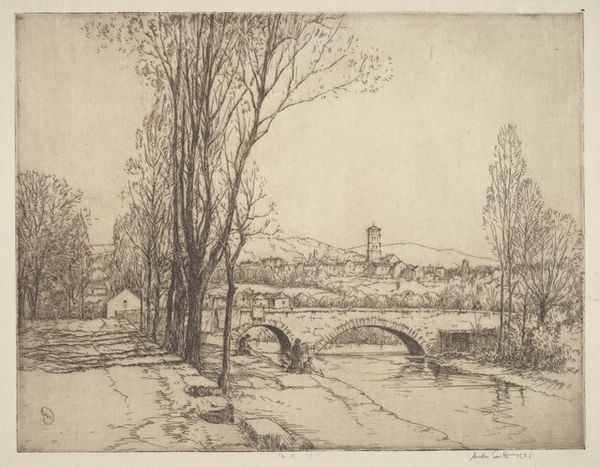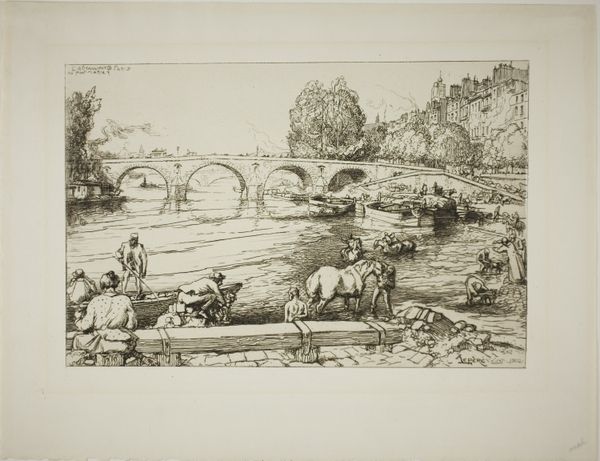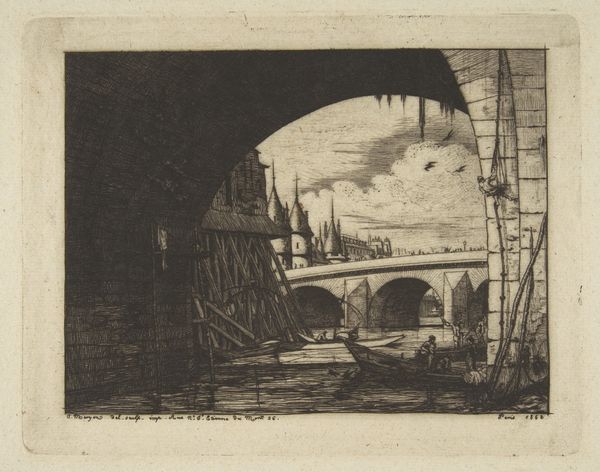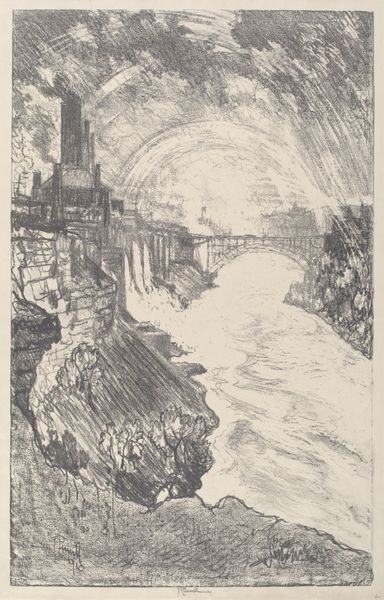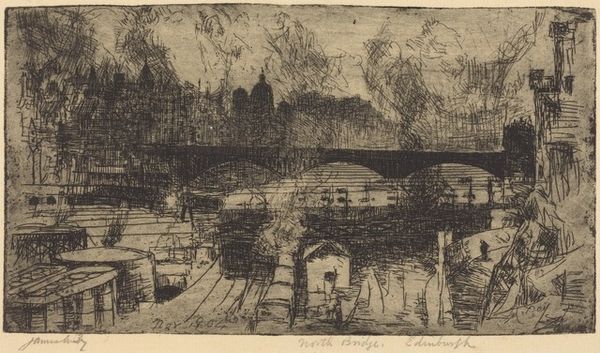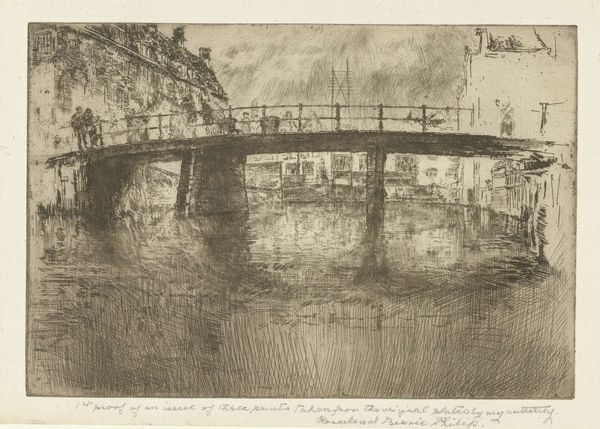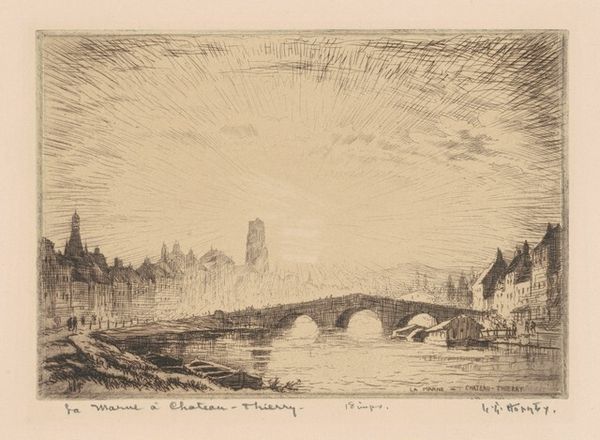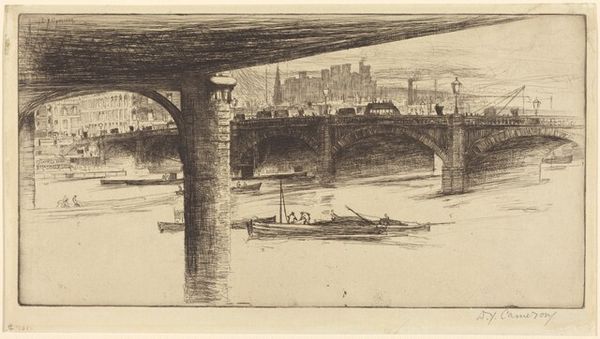
print, etching, engraving
# print
#
etching
#
landscape
#
engraving
#
realism
Copyright: National Gallery of Art: CC0 1.0
Curator: Today, we’re looking at James McBey's etching, "Bridge of San Martin, Toledo," created in 1911. It has a stark quality; what are your first impressions? Editor: The mood it evokes is certainly brooding, with those stark lines hinting at something foreboding lurking beneath the surface. All those dark and contrasting lines converge at the top, creating an arch to me. I imagine this bridge speaks to strength and power over a passage or time itself. Curator: Interesting observation. If you examine the formal arrangement of lines and shapes, McBey has masterfully used the etching technique to create depth. The repetition of the archways of the bridge forms a visual rhythm that carries the viewer’s eye across the landscape. Editor: Indeed, the bridge itself acts as a potent symbol here. Bridges in art are often viewed as liminal spaces - threshold between two worlds, past and future, conscious and unconscious. And positioned in Toledo, known historically for its religious coexistence and conflict, makes this artwork ripe for deeper reading. Curator: It also exemplifies a remarkable interplay between light and shadow. The reflected water seems to mirror a sense of unrest—the jagged lines amplify rather than subdue the architectural construction. Editor: The light striking the bridge is compelling and reinforces the iconographic interpretation of my view, Toledo was considered as ‘city of the three cultures’ during medieval times. In the print, the harsh lights seems almost judgemental – not harmonious as that notion suggests, which evokes a more layered complexity. Curator: Your point underscores how historical and symbolic context shapes our understanding. But purely in formal terms, the dynamism he has produced in a confined space stands out as it's a landscape almost devoid of movement, but with so many visual elements going on. Editor: Yes, indeed, which invites viewers to construct their narratives to unpack history or a feeling embedded in this artwork through what they know and what is visually apparent, wouldn’t you agree? Curator: Definitely. Thank you, both for exploring McBey's technique and this evocative interpretation of his work today! Editor: A thought provoking piece for sure. I am certainly going to do some further research.
Comments
No comments
Be the first to comment and join the conversation on the ultimate creative platform.
